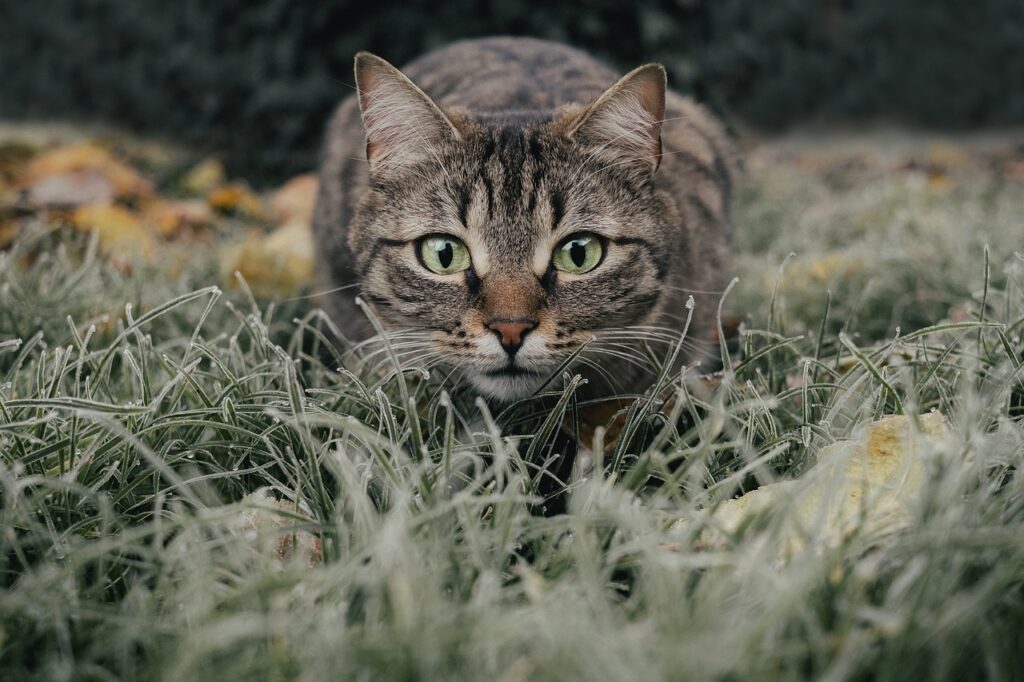Can Cats Eat Tuna? – Yes, They can
Many cat parents might wonder: can their furry friends safely enjoy a bit of tuna? The short answer is yes, cats can eat tuna, but there’s a little more to it than a simple yes or no. Tuna should be given in moderation and not as a replacement for a balanced cat diet. This fish is high in protein and has some omega-3 fatty acids which can be beneficial for your cat’s coat and joint health. However, too much tuna can lead to health issues such as mercury poisoning and vitamin E deficiency. Let’s dive deeper into the proper ways to feed your cat this seafood treat.
Can Kittens Eat Tuna?
When it comes to kittens, the rules are slightly different. The answer is with caution. Kittens have delicate digestive systems and their diet primarily needs to consist of specially formulated kitten food to support their rapid growth and development. Tuna can be introduced to kittens sparingly as a treat but should not become a staple of their diet. It is crucial to ensure the tuna is fresh and cooked without any added salt, spices, or sauces that can be harmful to kittens.
Things to consider when feeding tuna to kittens?
Before sharing tuna with your kitten, consider its nutritional content and how it fits into their overall diet. Remember, the high protein content can be hard for their young digestive systems to process. Also, large fish like tuna can contain mercury which can affect a kitten’s development adversely if consumed in large quantities. When you do opt to give tuna to your kitten, make sure it’s a small amount and not a frequent occurrence.
Nutritional Benefits of Tuna for Cats – Why Tuna is Good for Cats
Protein
Tuna is packed with high-quality protein, which is essential for maintaining lean muscle mass in cats. As obligate carnivores, cats thrive on a diet rich in animal protein.
Omega-3 Fatty Acids
These essential fats are not produced by cats’ bodies, so they need to be included in the diet. Tuna is a good source of omega-3s, which can contribute to a shiny coat and aid joint health.
B Vitamins
They play a vital role in maintaining a cat’s metabolism and health. Tuna can provide B vitamins such as niacin, which is crucial for a cat’s skin and coat.
Taurine
This amino acid is vital for cats’ heart muscle function, vision, and reproduction. Tuna contains taurine, but the amount can vary, so it should not be relied on as the sole source.
Minerals
Tuna provides minerals like selenium, magnesium, and potassium, which are important for various bodily functions in cats, including immune response and thyroid health.
Potential Allergies: Can Cats Be Allergic to Tuna?
While allergies to tuna in cats are not common, they can occur. If you’re introducing tuna or any new food to your cat’s diet, do so gradually and watch for any signs of an allergic reaction.
Symptoms of Tuna Allergies in Cats
- Itchy skin: Look for your cat scratching more than usual or any redness and irritation on the skin.
- Upset stomach: Vomiting or diarrhea after eating tuna could indicate an allergy.
- Respiratory issues: Coughing, wheezing, or any other unusual breathing problems might signal an allergic reaction.
What to Do If Your Cat Shows Symptoms?
- Immediate cessation: Stop feeding your cat tuna and revert to their regular diet.
- Veterinary visit: If symptoms persist or are severe, consult your vet for proper diagnosis and treatment.
- Hypoallergenic diet: Your vet may recommend a specialized diet to determine the cause of the allergic reaction.
Recommended Amount: How Much Tuna Can a Cat Consume?
The key here is moderation. Tuna should be an occasional treat, not a regular part of your cat’s diet. A small amount of tuna once a week is typically safe for healthy adult cats. Always remember to ensure that any human foods given to your pet don’t make up more than 10% of their overall diet.
Things to Consider When Feeding Tuna to Cats
Always opt for tuna that’s been cooked and has no added salt or other seasonings that could be harmful to cats. Additionally, be mindful of the type of tuna; skipjack and canned light tuna generally have lower levels of mercury compared to albacore or white tuna.
How to Feed Tuna to Cats: A Quick Guide
Feeding tuna to your cat can be a delightful treat for them, and there are safe ways to do so. Always make sure the tuna is fresh and has been prepared in a cat-friendly way, without additional ingredients like onion or garlic that are toxic to cats.
Simple Tuna Flakes
Give your cat a small amount of cooked tuna flakes. Ensure there are no bones and that it’s been thoroughly cooked without any oil or seasonings.
Tuna and Pumpkin Puree
Mix a small amount of tuna with pumpkin puree for an extra fiber boost. This can help with your cat’s digestion and adds variety to their treats.
Tuna Ice Cube Treats
For a refreshing summer treat, mix tuna with water and freeze it in an ice cube tray. These can be given to your cat to lick and play with on a hot day.
Conclusion
In conclusion, cats can safely consume tuna when it’s given in moderation and as a part of a balanced diet. While the nutrient-rich fish can offer some health benefits, it’s important to consider the potential risks and ensure you’re feeding it to your cat appropriately. Always consult with your veterinarian before making any significant changes to your pet’s diet.



